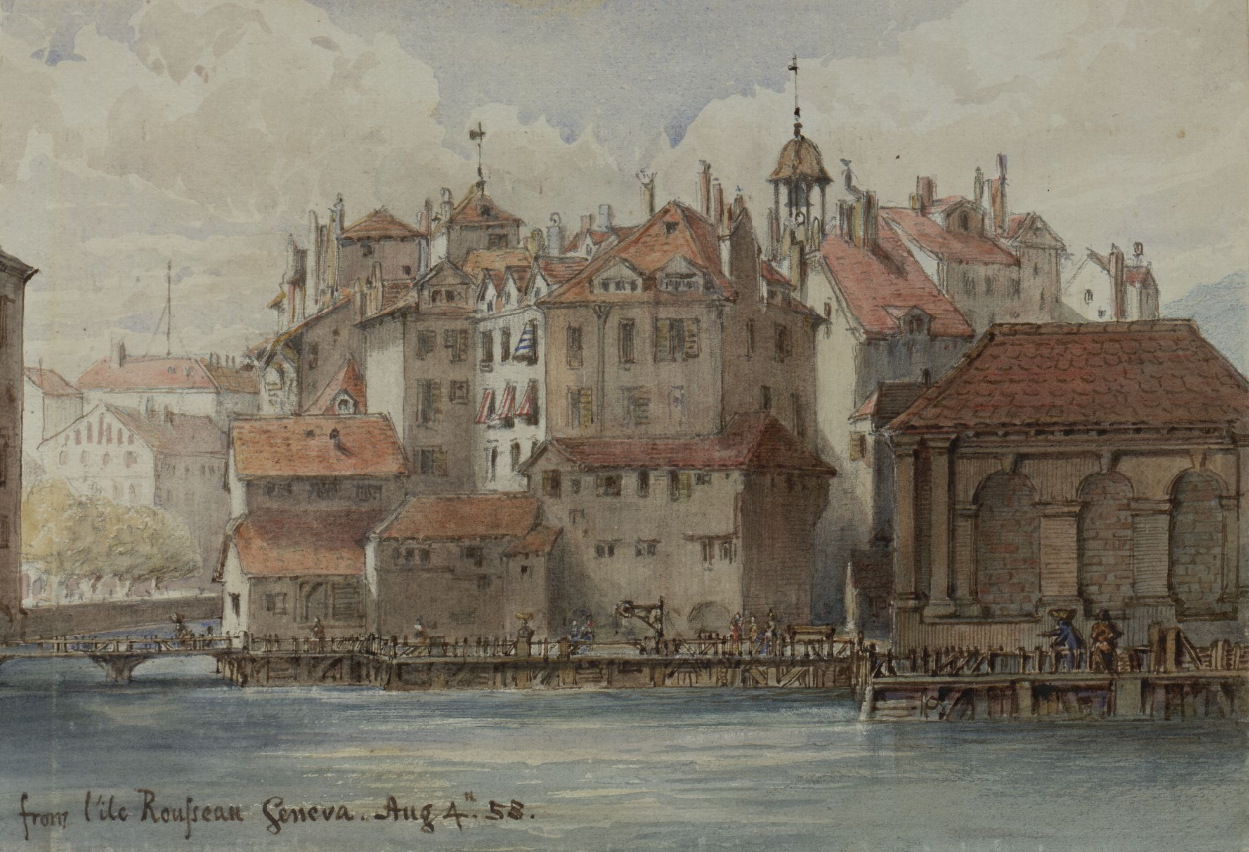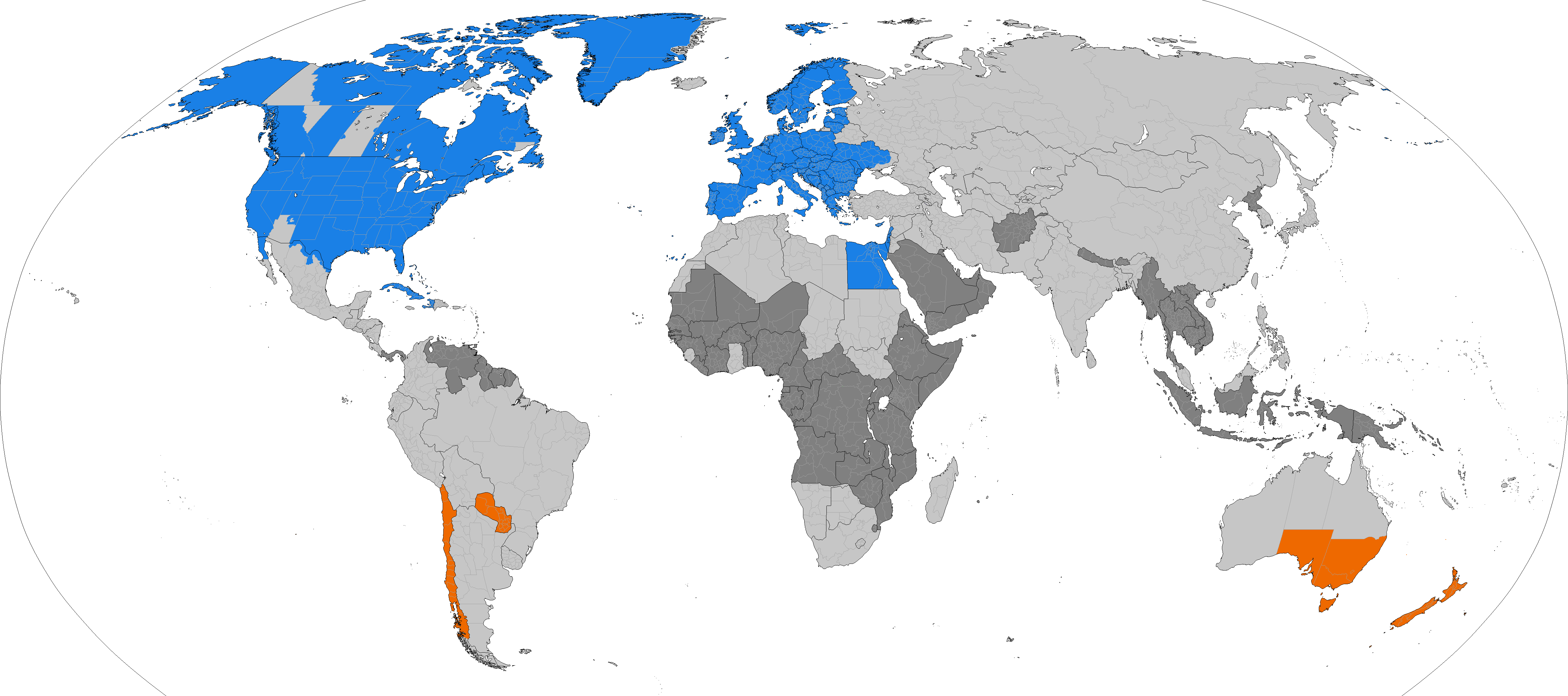|
Outline Of Geneva
The following outline is provided as an overview of and topical guide to Geneva: Geneva – General reference * Pronunciation: ; french: Genève ; frp, Genèva ; german: Genf ; it, link=yes, Ginevra ; rm, link=yes, Genevra; Names of European cities in different languages: E–H#G * Common English name(s): Geneva * Official English name(s): Geneva * Adjectival(s): Genevan, Genevese * Demonym(s): Genevan, Genevese Geography of Geneva Geography of Geneva * Geneva is: ** a city ** capital of the Canton of Geneva * Population of Geneva: 198,979 * Area of Geneva: 15.92 km2 (6.15 sq mi) * Atlas of Geneva Location of Geneva * Geneva is situated within the following regions: ** Northern Hemisphere and Eastern Hemisphere *** Eurasia **** Europe (outline) ***** Central Europe ****** Switzerland (Outline of Switzerland, outline) ******* Canton of Geneva The Canton of Geneva, officially the Republic and Canton of Geneva (french: link=no, République et canton d ... [...More Info...] [...Related Items...] OR: [Wikipedia] [Google] [Baidu] |
Wappen Genf Matt
A coat of arms is a heraldic visual design on an escutcheon (i.e., shield), surcoat, or tabard (the latter two being outer garments). The coat of arms on an escutcheon forms the central element of the full heraldic achievement, which in its whole consists of a shield, supporters, a crest, and a motto. A coat of arms is traditionally unique to an individual person, family, state, organization, school or corporation. The term itself of 'coat of arms' describing in modern times just the heraldic design, originates from the description of the entire medieval chainmail 'surcoat' garment used in combat or preparation for the latter. Rolls of arms are collections of many coats of arms, and since the early Modern Age centuries, they have been a source of information for public showing and tracing the membership of a noble family, and therefore its genealogy across time. History Heraldic designs came into general use among European nobility in the 12th century. Systematic, h ... [...More Info...] [...Related Items...] OR: [Wikipedia] [Google] [Baidu] |
Grand Genève
Grand Genève ("Greater Geneva" in English) is a Local Grouping of Transnational Cooperation (in French: ''groupement local de coopération transfrontalière'', or GLCT), a public entity under Swiss law, in charge of organizing cooperation within the cross-border metropolitan area of Geneva (in particular metropolitan transports). The Grand Genève GLCT extends over Switzerland (entire Canton of Geneva and the canton of Vaud's entire Nyon District) and France (''Pôle métropolitain du Genevois français'', literally "Metropolitan hub of the French Genevan territory", a federation of eight French intercommunal councils in the departments of Ain and Haute-Savoie). The Grand Genève GLCT covers a land area of (27.7% Swiss territory, 72.3% French territory) and had a population of 1,025,316 in Jan. 2019 (Swiss estimates and French census), 58.5% of them living on Swiss territory, and 41.5% on French territory. History The city centre of Geneva is located only from the bor ... [...More Info...] [...Related Items...] OR: [Wikipedia] [Google] [Baidu] |
Rhône
The Rhône ( , ; wae, Rotten ; frp, Rôno ; oc, Ròse ) is a major river in France and Switzerland, rising in the Alps and flowing west and south through Lake Geneva and southeastern France before discharging into the Mediterranean Sea. At Arles, near its mouth, the river divides into the Great Rhône (french: le Grand Rhône, links=no) and the Little Rhône (). The resulting delta forms the Camargue region. The river's source is the Rhône Glacier, at the east edge of the Swiss canton of Valais. The glacier is part of the Saint-Gotthard Massif, which gives rise to three other major rivers: the Reuss, Rhine and Ticino. The Rhône is, with the Po and Nile, one of the three Mediterranean rivers with the largest water discharge. Etymology The name ''Rhône'' continues the Latin name (Greek ) in Greco-Roman geography. The Gaulish name of the river was or (from a PIE root *''ret-'' "to run, roll" frequently found in river names). Names in other languages include german ... [...More Info...] [...Related Items...] OR: [Wikipedia] [Google] [Baidu] |
Arve
The Arve (french: L'Arve, ) is a river in France (''département'' of Haute-Savoie), and Switzerland (canton of Geneva). A left tributary of the Rhône, it is long, of which 9 km in Switzerland. Its catchment area is , of which 80 km2 in Switzerland. Its average discharge in Geneva is . Rising in the northern side of the Mont Blanc massif in the Alps, close to the Swiss border, it receives water from the many glaciers of the Chamonix valley (mainly the Mer de Glace) before flowing north-west into the Rhône on the west side of Geneva, where its much higher level of silt brings forth a striking contrast between the two rivers. The Arve flows through Chamonix, Sallanches, Oëx, Cluses, Bonneville, Annemasse and Geneva. Tributaries include, from source to mouth: Arveyron, Diosaz, Bon-Nant, Sallanche, Giffre, Borne, Menoge, Foron, Seymaz and Aire. Gallery Image:Rhône and Arve Junction.jpg, The Arve (right) meets the Rhône in Geneva Geneva ( ; fre ... [...More Info...] [...Related Items...] OR: [Wikipedia] [Google] [Baidu] |
Lake Geneva
, image = Lake Geneva by Sentinel-2.jpg , caption = Satellite image , image_bathymetry = , caption_bathymetry = , location = Switzerland, France , coords = , lake_type = Glacial lake , inflow = Rhône, Dranse , outflow = Rhône , catchment = , basin_countries = Switzerland, France , length = , width = , area = , depth = , max-depth = , volume = , residence_time = 11.4 years , shore = , elevation = , islands = Île de Peilz, Château de Chillon, Île de Salagnon, Île de la Harpe, Île Rousseau, Île de Choisi , cities = Geneva (CH), Lausanne (CH), Évian (F), Montreux (CH), Thonon (F), Vevey (CH) (''see list'') , pushpin_map=France Rhône-Alpes#Canton of Vaud#Canton of Valais#Switzerland#France#Alps , pushpin_label_position= botto ... [...More Info...] [...Related Items...] OR: [Wikipedia] [Google] [Baidu] |
Île Rousseau
The Île Rousseau is an island and park in Geneva, situated in the middle of the Rhone. It was named after the philosopher Jean-Jacques Rousseau Jean-Jacques Rousseau (, ; 28 June 1712 – 2 July 1778) was a Genevan philosopher, writer, and composer. His political philosophy influenced the progress of the Age of Enlightenment throughout Europe, as well as aspects of the French Revolu .... On the island is a statue of Rousseau. The island is connected to the shore by a bridge. External links *Île Rousseau on Genève-tourisme.ch {{DEFAULTSORT:Ile Rousseau Jean-Jacques Rousseau Geography of Geneva River islands of Switzerland Rhône Landforms of the canton of Geneva ... [...More Info...] [...Related Items...] OR: [Wikipedia] [Google] [Baidu] |
Genève Vue Du Salève
Geneva ( ; french: Genève ) frp, Genèva ; german: link=no, Genf ; it, Ginevra ; rm, Genevra is the second-most populous city in Switzerland (after Zürich) and the most populous city of Romandy, the French-speaking part of Switzerland. Situated in the south west of the country, where the Rhône exits Lake Geneva, it is the capital of the Republic and Canton of Geneva. The city of Geneva () had a population 201,818 in 2019 (Jan. estimate) within its small municipal territory of , but the Canton of Geneva (the city and its closest Swiss suburbs and exurbs) had a population of 499,480 (Jan. 2019 estimate) over , and together with the suburbs and exurbs located in the canton of Vaud and in the French departments of Ain and Haute-Savoie the cross-border Geneva metropolitan area as officially defined by Eurostat, which extends over ,As of 2020, the Eurostat-defined Functional Urban Area of Geneva was made up of 93 Swiss communes and 158 French communesFederal Statistical O ... [...More Info...] [...Related Items...] OR: [Wikipedia] [Google] [Baidu] |
DJI 0093
SZ DJI Technology Co., Ltd. or Shenzhen DJI Sciences and Technologies Ltd. ( zh, c=深圳大疆创新科技有限公司, p=Shēnzhèn Dà Jiāng Chuàngxīn Kējì Yǒuxiàn Gōngsī) in full, more popularly known as its trade name DJI, which stands for Da-Jiang Innovations (), is a Chinese technology company headquartered in Shenzhen, Guangdong, backed by several state-owned entities. DJI manufactures commercial unmanned aerial vehicles (drones) for aerial photography and videography. It also designs and manufactures camera gimbals, action cameras, camera stabilizers, flight platforms, propulsion systems and flight control systems. DJI accounts for around 76% of the world's consumer drone market as of March 2021. Its camera drone technology is widely used in the music, television and film industries. The company's products have also been used by militaries and police forces, as well as terrorist groups, with the company taking steps to limit access to the latter. ... [...More Info...] [...Related Items...] OR: [Wikipedia] [Google] [Baidu] |
UTC+02
UTC+02:00 is an identifier for a time offset from UTC of +02:00. In ISO 8601, the associated time would be written as 2020-11-08T23:41:45+02:00. This time is used in: As standard time (year-round) ''Principal cities: Cairo, Pretoria, Cape Town, Johannesburg, Khartoum, Lubumbashi, Kigali, Gaborone, Bujumbura, Manzini, Maseru, Tripoli, Lilongwe, Maputo, Windhoek, Omdurman, Juba, Lusaka, Harare, Kaliningrad'' Africa Central Africa *Botswana *Burundi *Democratic Republic of the Congo **The provinces of Bas-Uele, Haut-Katanga, Haut-Lomami, Haut-Uele, Kasaï, Kasaï Occidental, Kasaï Oriental, Katanga, Lomani, Lualaba, Maniema, Nord-Kivu, Orientale, Sankuru, Sud-Kivu, Tanganyika, Tshopo and Ituri Interim Administration *Egypt *Eswatini *Lesotho *Libya *Malawi *Mozambique *Namibia *Rwanda *South Africa (except Prince Edward Islands) *Sudan *South Sudan *Zambia *Zimbabwe Europe *Russia **Northwestern Federal District ***Kaliningrad Oblast As standard time ... [...More Info...] [...Related Items...] OR: [Wikipedia] [Google] [Baidu] |
Central European Summer Time
Central European Summer Time (CEST), sometimes referred to as Central European Daylight Time (CEDT), is the standard clock time observed during the period of summer daylight-saving in those European countries which observe Central European Time (CET; UTC+01:00) during the other part of the year. It corresponds to UTC+02:00, which makes it the same as Eastern European Time, Central Africa Time, South African Standard Time, Egypt Standard Time and Kaliningrad Time in Russia. Names Other names which have been applied to Central European Summer Time are Middle European Summer Time (MEST), Central European Daylight Saving Time (CEDT), and Bravo Time (after the second letter of the NATO phonetic alphabet). Period of observation Since 1996, European Summer Time has been observed between 01:00 UTC (02:00 CET and 03:00 CEST) on the last Sunday of March, and 01:00 UTC on the last Sunday of October; previously the rules were not uniform across the European Union. There were propo ... [...More Info...] [...Related Items...] OR: [Wikipedia] [Google] [Baidu] |
Daylight Saving Time
Daylight saving time (DST), also referred to as daylight savings time or simply daylight time (United States, Canada, and Australia), and summer time (United Kingdom, European Union, and others), is the practice of advancing clocks (typically by one hour) during warmer months so that darkness falls at a later clock time. The typical implementation of DST is to set clocks forward by one hour in the spring (" spring forward"), and to set clocks back by one hour in the fall (" fall back") to return to standard time. As a result, there is one 23-hour day in early spring and one 25-hour day in the middle of autumn. The idea of aligning waking hours to daylight hours to conserve candles was first proposed in 1784 by U.S. polymath Benjamin Franklin. In a satirical letter to the editor of ''The Journal of Paris'', Franklin suggested that waking up earlier in the summer would economize on candle usage; and calculated considerable savings. In 1895, New Zealand entomologist and astron ... [...More Info...] [...Related Items...] OR: [Wikipedia] [Google] [Baidu] |

.jpg)


.png)
